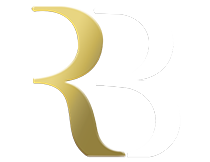- May 20, 2024
- 4:52 pm
- No Comments
In the digital age, the U.S. government faces the dual challenge of modernizing its aging IT infrastructure and securing it against increasingly sophisticated cyber threats. Effective modernization and robust security are essential to ensure efficient service delivery, protect sensitive data, and safeguard national security. This article explores the current landscape, the necessity for modernization, key strategies, and steps the U.S. government is taking to secure its systems.
The Current Landscape
Many U.S. government systems still rely on outdated legacy infrastructure, some of which were developed decades ago. These systems are often difficult to maintain, prone to failures, and incompatible with modern technologies. Moreover, they present significant security risks due to outdated security protocols and insufficient defenses against modern cyber threats.
The Necessity for Modernization
Operational Efficiency: Modernizing IT infrastructure can significantly enhance operational efficiency by automating processes, reducing maintenance costs, and improving the speed and reliability of government services.
Innovation and Adaptability: Up-to-date systems are essential for adopting new technologies such as artificial intelligence (AI), blockchain, and advanced data analytics, which can drive innovation in public administration.
Security and Resilience: Modern systems are better equipped with advanced security features to protect against cyber threats, ensuring resilience and continuity of critical government operations.
Security Concerns
Cyber Threats: Government systems are prime targets for cyber attacks, including ransomware, phishing, and state-sponsored attacks. These threats can compromise sensitive data, disrupt services, and jeopardize national security.
Data Breaches: The vast amounts of sensitive data handled by government agencies make them attractive targets for data breaches, leading to potential identity theft, financial fraud, and erosion of public trust.
Regulatory Compliance: Ensuring compliance with data protection regulations, such as the Federal Information Security Management Act (FISMA) and the General Data Protection Regulation (GDPR), is crucial to avoid legal repercussions and financial penalties.
Key Strategies for Modernization and Security
Cloud Adoption: Migrating to cloud computing platforms can enhance scalability, flexibility, and cost-efficiency. Cloud services also offer advanced security features, such as data encryption and multi-factor authentication.
Zero Trust Architecture: Implementing a Zero Trust security model, which assumes that threats could be both inside and outside the network, enhances security by requiring strict verification for all users and devices attempting to access resources.
Advanced Technologies:
- Artificial Intelligence and Machine Learning: Predictive analytics, threat detection, and automated response to cyber incidents.
- Blockchain: Ensuring the integrity and transparency of government transactions and records.
- Internet of Things (IoT) Security: Robust security measures for IoT devices used in government operations.
Enhanced Data Protection: Encrypting sensitive data, implementing multi-factor authentication, and secure data storage solutions can protect against unauthorized access and breaches. Data minimization practices should be adopted to limit the collection and retention of personal data.
Regular Audits and Assessments: Conducting frequent security audits and risk assessments helps identify and address vulnerabilities. Engaging independent security assessors can provide objective evaluations and recommendations.
Employee Training and Awareness: Continuous training programs for government employees on cybersecurity best practices can reduce the risk of human error, a common cause of security breaches.
Public-Private Partnerships: Collaborating with private sector partners and cybersecurity experts can enhance threat intelligence sharing and resource allocation.
Steps the U.S. Government is Taking
Federal IT Modernization Initiatives:
- Modernizing Government Technology Act (MGT Act): Funding and resources for federal agencies to modernize their IT systems.
- Technology Modernization Fund (TMF): Financial support for critical IT modernization projects.
Cybersecurity Executive Orders and Policies:
- Executive Order on Improving the Nation’s Cybersecurity: Mandates federal agencies to enhance cybersecurity measures.
- National Cyber Strategy: Outlines the U.S. government’s approach to strengthening cybersecurity.
Cybersecurity and Infrastructure Security Agency (CISA): Provides guidance, resources, and support to federal, state, and local agencies in implementing effective cybersecurity practices.
Conclusion
Modernizing and securing U.S. government systems is a critical imperative to meet the demands of the digital age. By adopting advanced technologies, implementing robust cybersecurity frameworks, and fostering a culture of continuous improvement, the U.S. government can enhance operational efficiency, protect sensitive data, and safeguard national security. These efforts will ensure that government services remain reliable, secure, and resilient in the face of evolving cyber threats.
